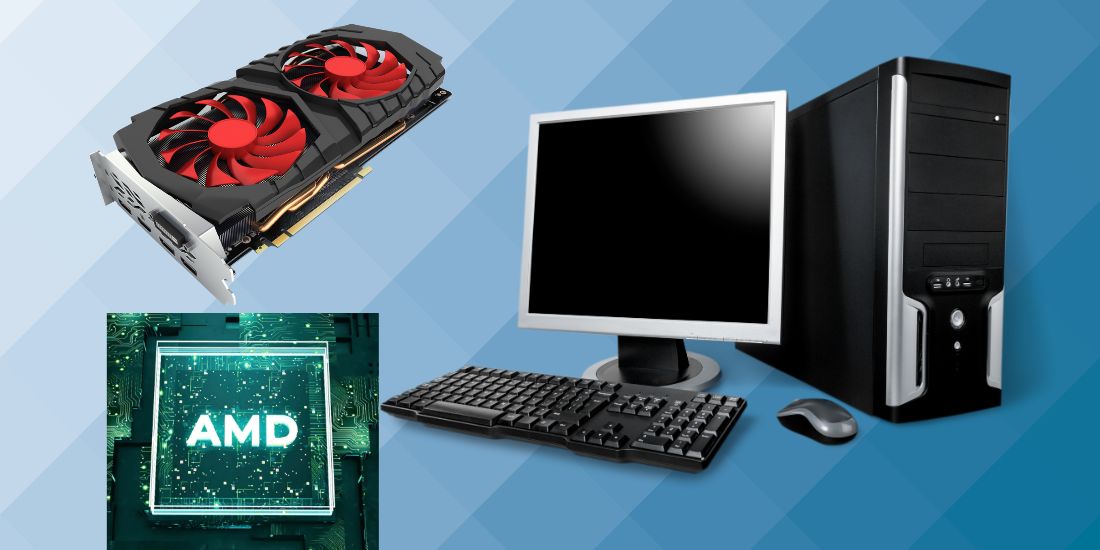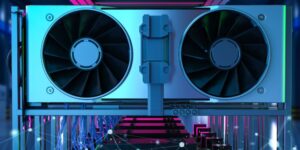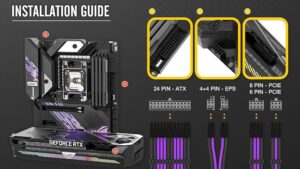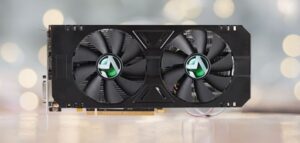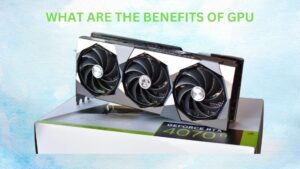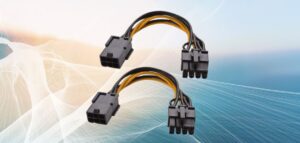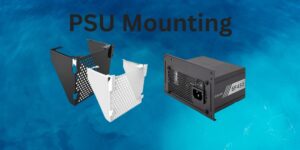Can I Use AMD GPU with Intel CPU? Exploring Compatibility
The world of computer hardware can be complex and overwhelming, especially when it comes to choosing the right components for your system. One common question that arises is whether you can use an AMD GPU with an Intel CPU. This query is particularly relevant for those looking to build a custom PC or upgrade their existing system. The answer to this question is not a simple yes or no; it depends on various factors such as the specific components, system configuration, and the type of applications you plan to run. In this post, we’ll delve into Can I Use AMD GPU with Intel CPU?
We’ll discuss the basics of GPUs, Intel’s approach to the GPU market, and the performance implications of using an AMD GPU with an Intel CPU. Additionally, we’ll touch on the challenges and limitations of such a configuration and guide how to make it work effectively. Whether you’re a gamer, content creator, or AI enthusiast, this post will help you decide about using an AMD GPU with an Intel CPU.
Intel’s Approach to GPUs:
Intel first entered the GPU market in the late 1990s but initially produced lacklustre 3D accelerators compared to the competition1. Instead of competing directly with NVIDIA and AMD, Intel focused on integrating their GPUs into motherboard chipsets and later into CPUs. This strategy resulted in a large nominal market share, as most computers with an Intel CPU also featured an embedded Intel Graphics Technology GPU. Although these integrated GPUs generally lagged behind discrete processors in performance, they were sufficient for less demanding tasks. In 2022, Intel re-entered the discrete GPU market with its Arc series, which competes with NVIDIA’s GeForce 30 series and AMD’s Radeon 6000 series cards at competitive prices. This move marked a significant shift in Intel’s approach to the GPU market, indicating their commitment to providing high-performance graphics solutions.
Understanding Compatibility Of AMD GPU with Intel CPU
AMD GPUs and Intel CPUs: Compatibility and Performance:
Yes, you can use an AMD GPU with an Intel CPU in your PC build. The two companies may be competing in both the CPU and GPU hardware spaces, but that doesn’t mean their components won’t work together inside your system.
Compatibility:
AMD GPUs are compatible with Intel CPUs, and many systems use AMD GPUs with Intel processors without issues. However, the performance of the system may not be optimized, as the GPU and CPU are from different manufacturers. This can lead to potential bottlenecks in data transfer and processing, which may affect the overall system performance.
Performance Implications:
Modern Intel CPUs can keep a consistent, if sometimes small, lead in gaming performance when compared to AMD CPUs. This means that for high refresh rate gaming, an AMD GPU paired with an Intel CPU can be a compelling combination. However, it’s important to note that if the GPU is too good for the CPU (e.g., pairing an Nvidia GeForce RTX 4090 with an Intel Core i3 processor) or vice-versa, you may find yourself turning down some in-game settings and enjoying a sub-par experience. In an ideal world, there should be no bottleneck between your CPU and GPU, and both should be equally fast, so you get the most out of your PC.
Challenges and Limitations:
One of the primary challenges in using an AMD GPU with an Intel CPU is the potential for bottlenecks in data transfer between the GPU and CPU. This can be mitigated by using a high-speed interconnect like PCIe 4.0, which provides faster data transfer rates. Additionally, the power supply and cooling systems must be capable of handling the combined power draw and heat generation of the GPU and CPU.
What Determines Compatibility?
When it comes to building a PC, compatibility between components is crucial to ensure smooth operation and optimal performance. In the case of AMD GPUs and Intel CPUs, compatibility is not a major concern, as both companies design their products to work with a wide range of systems. However, there are certain factors to consider when pairing an AMD GPU with an Intel CPU to ensure the best possible performance.
Matching CPU and GPU Performance:
One of the key considerations is matching the performance of the CPU and GPU. If the GPU is significantly more powerful than the CPU, it can lead to a CPU bottleneck, where the CPU struggles to keep up with the GPU’s processing demands. Conversely, if the CPU is much faster than the GPU, it can result in a GPU bottleneck, where the GPU becomes the limiting factor in system performance1. Ideally, the CPU and GPU should be balanced to minimize bottlenecks and maximize performance.
System Configuration and Software:
The system configuration and software used also play a significant role in determining compatibility. For example, some software may be optimized to work better with AMD CPUs and GPUs, while others may be more compatible with Intel CPUs and NVIDIA GPUs. Additionally, the motherboard and other system components must be compatible with both the AMD GPU and Intel CPU to ensure smooth operation.
Power Supply and Cooling:
The power supply and cooling systems are also critical considerations. The power supply must be capable of providing sufficient power to both the CPU and GPU, while the cooling system must be able to effectively dissipate the heat generated by both components.
The Basics of GPU and CPU:
The CPU (Central Processing Unit) and GPU (Graphics Processing Unit) are two essential components in modern computers. While both are microprocessors, they serve different purposes and have distinct architectures to handle specific tasks efficiently.
CPU: The Brain of the Computer:
The CPU is often referred to as the “brain” of the computer, as it handles all the main functions of a computer. It is a generalist component that excels at processing one big task at a time, making it better suited for tasks that require low latency. CPUs have a few universal features, including:
- Cores: A core is a CPU’s processor. Modern computers commonly have anywhere from two to 64 cores, with more cores leading to better performance and efficiency.
- Simultaneous multithreading/hyperthreading: This allows processing to be delegated to multiple software threads, effectively turning one core into two “logical” cores.
- Cache: CPUs have ultra-fast memory built right in, which is faster than any RAM or type of SSD.
- Memory Management Unit (MMU): The MMU is responsible for all memory and caching operations, acting as the middleman between the CPU and RAM during the fetch-decode-execute cycle.
- Control Unit: The control unit orchestrates the operations of the CPU, telling the RAM, logic unit, and I/O devices how to act according to the instructions received.
GPU: The Specialized Processor:
A GPU, also known as a graphics card or video card, is a computer component that renders images and video. GPUs are specialized components that excel at running many smaller tasks at once, making them better suited for tasks that require high throughput. They are particularly well-suited for multitasking, with thousands of cores that can handle many more mathematical and geographical calculations at once with greater efficiency.
GPUs can be either independent from the motherboard (discrete) and have their memory (vRAM) or soldered to it (integrated) and share memory with the CPU. Discrete GPUs generally have better performance than integrated GPUs since they are larger and have their own resources.
Key Differences:
The primary difference between a CPU and a GPU is that a CPU handles all the main functions of a computer, whereas the GPU is a specialized component that excels at running many smaller tasks at once. CPUs are designed for low latency, whereas GPUs are designed for high throughput. Lastly, the CPU is a general processor, while the GPU is a specialized processor. In summary, while both CPUs and GPUs are essential components in modern computers, they serve different purposes and have distinct architectures to handle specific tasks efficiently. Understanding the differences between CPUs and GPUs is crucial for building a system that runs smoothly and efficiently.
The Compatibility Factor:
Historically, AMD GPUs and Intel CPUs have been compatible with each other. The compatibility mainly hinges on the interfaces and protocols used. Here are some key points to consider:
PCIe Compatibility:
- Both AMD GPUs and Intel CPUs utilize the PCIe (Peripheral Component Interconnect Express) interface for communication. This means that, in most cases, you can seamlessly connect an AMD GPU to an Intel CPU via a PCIe slot on your motherboard.
Driver Support:
- Modern operating systems typically come with built-in drivers that support a wide range of hardware components, including AMD GPUs and Intel CPUs. However, for optimal performance and compatibility, it’s advisable to download the latest GPU drivers from AMD’s official website.
Compatibility Concerns:
- While compatibility issues are relatively rare, it’s essential to check the physical dimensions of your GPU and the available space in your computer case. Additionally, ensure that your power supply unit (PSU) can provide sufficient wattage for both your CPU and GPU.
Optimizing Performance:
Optimizing performance is a crucial aspect of IT operations, as it directly impacts the efficiency and reliability of systems. Real-time monitoring offers deep insights into system performance by collecting and analyzing data metrics such as CPU usage, memory utilization, and disk I/O. This proactive approach helps predict and prevent issues before they happen, saving time and resources in the long run.
Monitoring and Analysis:
Monitoring and analysis are ongoing processes that help pinpoint bottlenecks and inefficiencies in IT systems. It’s essential to establish a routine for reviewing and analyzing performance metrics to identify areas for improvement. Tools like Prometheus and Grafana are popular for monitoring and analyzing performance, offering powerful features and scalability.
CPU Scheduling and Threads:
CPU scheduling and thread management are critical for optimizing performance. Windows implements processor time-sharing, allowing threads to run for a period before switching to another thread. Understanding thread states (Running, Ready, and Waiting) and transitions between them is vital for performance optimization.
Exercises and Tools:
Microsoft provides tools like the Windows Performance Toolkit (WPT) to help analyze performance problems. The WPT consists of a Windows Performance Recorder (WPR) for creating Event Tracing for Windows (ETW) recordings and a Windows Performance Analyzer (WPA) for analysis. These tools help gather relevant data, understand system resource consumption, and identify factors impacting system responsiveness.
Configuration Best Practices:
Optimizing performance also involves configuration best practices. Cloudera Runtime provides solutions to performance problems and describes configuration best practices for optimizing performance in clusters.
GPU Memory Management:
In integrated CPU/GPU architectures, GPU memory management methods can have hidden performance implications. Co-optimizing performance and memory footprint via integrated CPU/GPU architecture is an area of ongoing research, highlighting the importance of considering the interplay between CPU and GPU performance.
Deep Learning and AI Applications:
In recent years, GPUs have become crucial for AI and deep learning applications, excelling in parallel computing tasks. AMD GPUs, known for their cost-efficiency, have demonstrated effectiveness in serving large language models (LLMs) when combined with optimized software stacks. This showcases the potential of AMD GPUs in AI applications, even when utilized alongside Intel CPUs. The ability of GPUs to handle massively parallel computations has made them indispensable in the realm of artificial intelligence, where efficient processing of complex data sets is paramount for tasks like language processing, image recognition, and predictive modelling.
Conclusion
In conclusion, using an AMD GPU with an Intel CPU is possible, but it’s essential to consider the potential performance implications and system compatibility. While AMD GPUs can be used with Intel CPUs, the optimal performance may not be achieved due to the differences in architecture and design. However, with the right system configuration and optimized software, AMD GPUs can still provide excellent performance, even in AI and deep learning applications.
For those looking to build a system with an AMD GPU and Intel CPU, it’s crucial to carefully select components that are compatible and optimized for each other. This may involve choosing a motherboard that supports both the Intel CPU and AMD GPU, as well as ensuring the power supply and cooling systems are capable of handling the combined load. In the end, the decision to use an AMD GPU with an Intel CPU depends on your specific needs and the type of applications you plan to run. If you’re looking for a cost-efficient solution for AI and deep learning tasks, an AMD GPU with an Intel CPU might be a viable option. However, if you require the absolute best performance, a system with components from the same manufacturer might be a better choice.
FAQs
1. Are there any compatibility issues with specific AMD GPU and Intel CPU models?
- Compatibility can vary between different GPU and CPU models. It’s essential to check compatibility lists and forums for specific recommendations.
2. Will using an AMD GPU with an Intel affect gaming performance negatively?
- In most cases, the impact on gaming performance is minimal, and you can still enjoy a great gaming experience with this combination.
3. Do I need any special drivers or software for AMD and Intel CPU compatibility?
- Both AMD and Intel provide drivers and software updates that ensure smooth compatibility between their products.
4. Can I use an AMD CPU with an NVIDIA GPU or vice versa?
- Yes, you can mix AMD CPUs with NVIDIA GPUs or Intel CPUs with AMD GPUs as well. Compatibility is not limited to brands.
5. What are the advantages of using an over an all-AMD or all-Intel setup?
- Combining AMD and Intel components can provide cost-effective solutions and access to a broader range of hardware options.
Last Updated on 12 May 2024 by Ansa Imran

Ansa Imran, a writer, excels in creating insightful content about technology and gaming. Her articles, known for their clarity and depth, help demystify complex tech topics for a broad audience. Ansa’s work showcases her passion for the latest tech trends and her ability to engage readers with informative, well-researched pieces.

